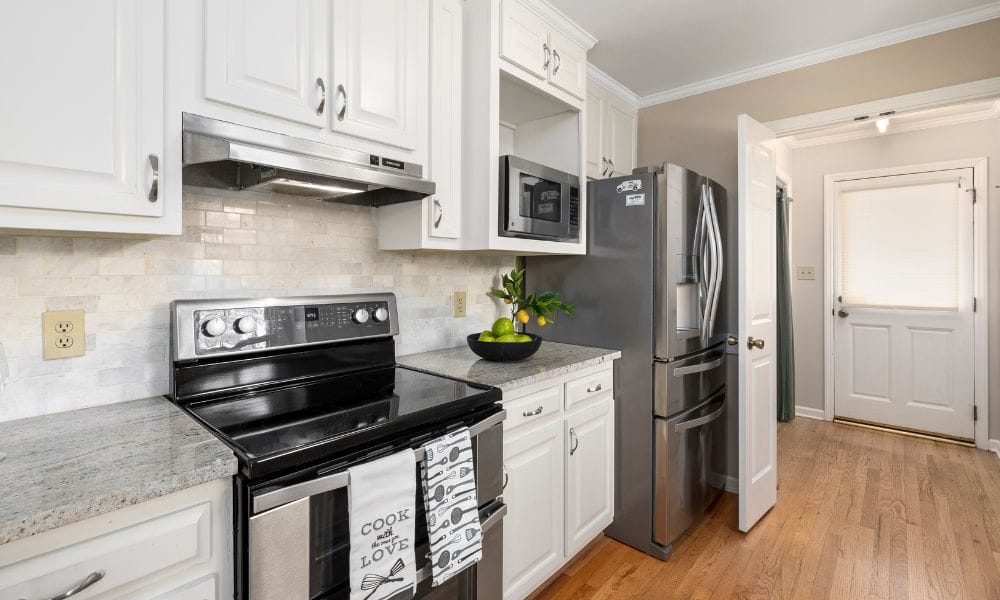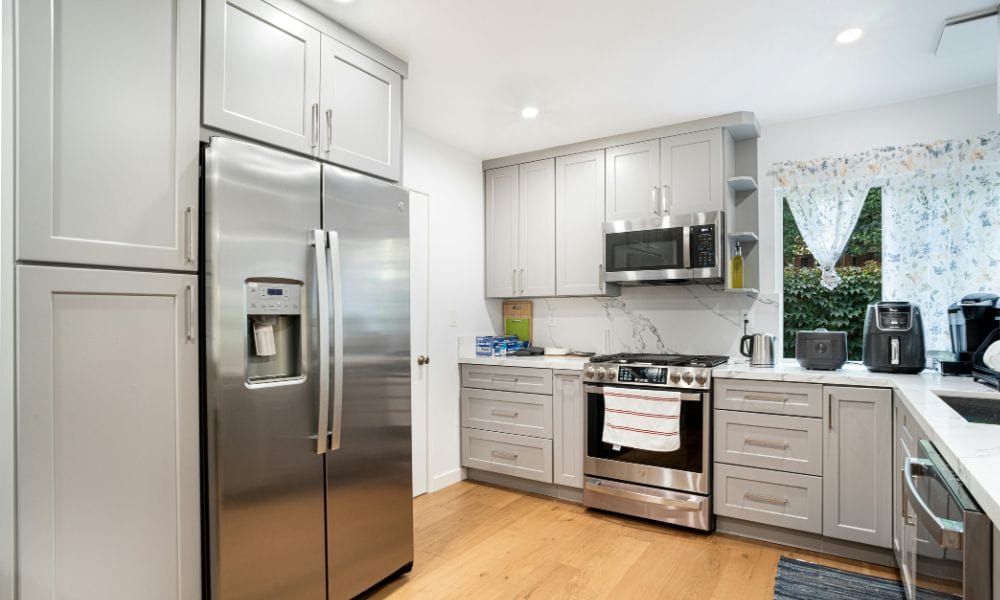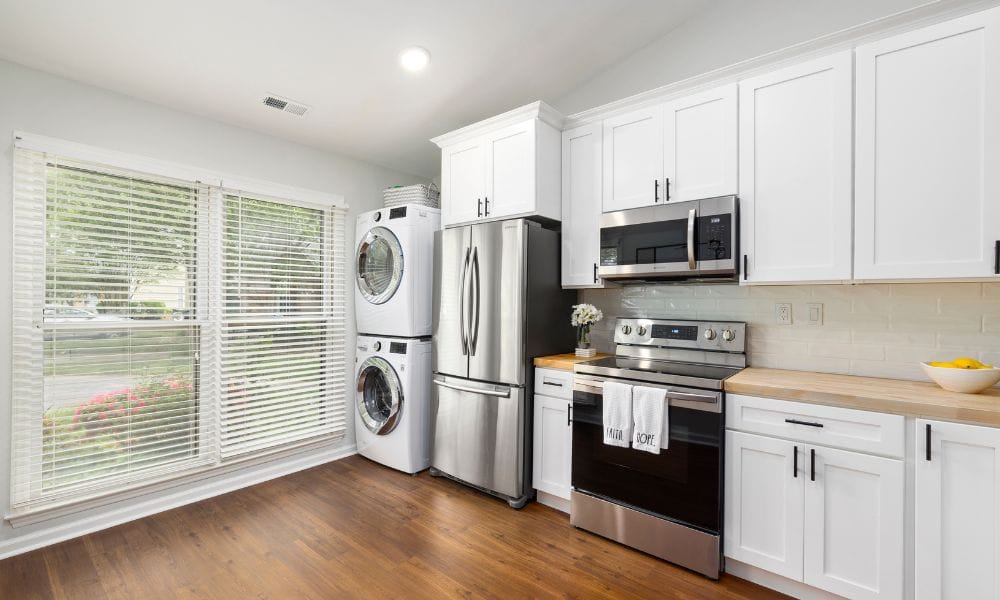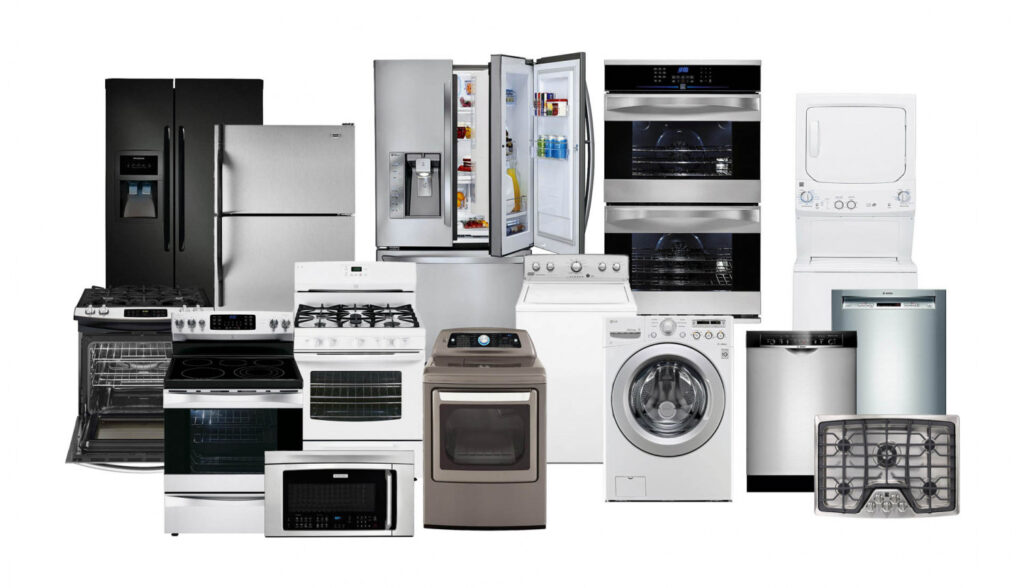
Appliance Placement Hacks: Don’t Make These Mistakes That Are Costing You More Than You Realize
Why Appliance Placement is Important
In the design and functionality of homes, appliance placement tends to be disregarded. But did you know that the wrong positioning can result in increased energy costs, shorter appliance life, and even safety hazards?
Whether you’re renovating your kitchen or just redecorating your laundry room, this guide addresses key appliance placement tips to make your home more efficient and save you money in the long term.
The Hidden Costs of Poor Appliance Placement
Having your appliances in the wrong place is not a big deal, but the hidden costs are soon piling up.
More energy used: Your fridge beside the oven has to work harder to remain cool.
Frequent breakdowns: Lack of airflow can overheat appliances.
Higher utility bills: Misplaced appliances can consume more electricity or gas.
That’s why applying smart appliance placement tips is crucial for optimizing performance and saving on repairs.
Kitchen Appliance Placement Tips
The kitchen is the most appliance-heavy area in the house. Here’s how to make the best use of the space:
1. Refrigerator Placement
Keep away from heat sources: Never place your refrigerator next to your oven or in direct sunlight.
Allow breathing room: Maintain at least a 2-inch gap from the wall for ventilation.
Accessibility: Ensure it’s close to the cooking and prep area for easy access.
2. Oven & Stove
Safe spacing: Keep ovens at a safe distance from windows and curtains to prevent fire hazards.
Proper height: Wall ovens must be installed at chest height to prevent bending and burns.
Ventilation: Install a range hood or overhead fan for proper airing.
3. Dishwasher
Next to the sink: Your dishwasher must be kept next to your sink for easy supply and drainage of water.
Door clearance: Ensure that there is ample space when the door will fully swing open.
Laundry Room Layout Best Practices
The laundry room is another place where strategic appliance placement can save you time and effort.
1. Washer and Dryer Tips
Side-by-side vs. stacked: Choose based on your room’s layout and your physical comfort.
Ventilation: Ensure there’s a vent for the dryer and space behind machines for hoses.
Accessibility: Keep laundry baskets and detergent nearby for workflow efficiency.
2. Utility Sink Placement
Place it next to the washer for easy pre-washing or rinsing.
Consider installing a splash guard if near electrical appliances.
Bathroom Appliance Arrangements
Bathrooms are smaller spaces, so maximizing layout is key.
Electric toothbrush chargers and hairdryers: Keep them away from water sources.
Heated towel rails: Install at a reachable height but away from direct contact with water.
Washing machine (if in bathroom): Use waterproof sockets and maintain dry zone clearances.
Appliance Placement Tips for Small Spaces
Small apartments or tiny homes require smarter layout strategies.
Use multi-functional appliances: Consider oven-dishwasher combos or washer-dryer units.
Wall-mount wherever possible: Microwaves, TVs, and even compact dryers can be wall-mounted.
Pull-out counters: These can act as workstations or storage over appliances.

Ventilation and Heat Dissipation
One of the most crucial appliance placement tips is accounting for ventilation.
Fridge: Needs airflow to keep compressors cool.
Microwave: Especially over-the-range models need exhaust venting.
Dryer: Always ensure there’s an exhaust path for hot air.
Without proper heat dissipation, your appliances overheat and wear out faster.
Electrical and Plumbing Access
When placing appliances, always think of utility connections.
Fridges and ovens: Ensure proximity to outlets and avoid extension cords.
Dishwashers and washers: Place near water supply and drain points.
Safety first: Avoid running cords under rugs or through walls.
Child Safety and Accessibility
If you have children or elderly family members, appliance placement plays an important role.
Microwaves: Place them out of children’s reach or consider drawer-style models.
Ovens: Install locks or guards.
Laundry: Keep detergents and chemical cleaners in higher cabinets.
Appliance Placement and Home Aesthetics
Smart appliance placement tips also enhance your home’s look and feel.
Built-in appliances: Provide a seamless, modern look.
Under-counter microwaves or drawers: Maintain countertop space.
Matching finishes and handles: Help blend appliances with cabinetry.
Functionality should never compromise style!
Seasonal Considerations for Appliance Placement
Did you know appliance efficiency changes with the seasons?
Avoid placing fridges near windows: Summer sun can overwork the compressor.
Outdoor appliances (grills, mini-fridges): Use all weather covers and shelter.
Heating appliances: Keep them away from flammable materials in winter.
Discover expert-recommended appliance placement tips to make your space safer and smarter.

Final Thoughts: Why Appliance Placement Tips Are Worth It
Following smart appliance placement tips helps in:
Extending appliance lifespan.
Reducing utility bills.
Improving daily comfort and safety.
It’s a small change with big benefits one that every homeowner should take seriously.
For more than just appliance placement tips, see how changing seasons impact your devices in our detailed post on weather effect on appliances.
FAQs: Appliance Placement Tips
Q1: Can I place my fridge next to the oven?
No, doing so will force your fridge to work harder, reducing efficiency and lifespan.
Q2: How much space should I leave behind appliances?
Typically 2–6 inches for ventilation, depending on the appliance.
Q3: Is stacking washer and dryer a good idea?
Yes, for saving space—just ensure they are compatible and stable.
Q4: Should appliances be near windows?
Avoid placing them in direct sunlight to prevent overheating and fading.
Q5: What if I have limited outlets?
Install additional outlets with the help of an electrician. Avoid using power strips.




[…] life in the kitchen. So go ahead and open that freezer door with assurance.Explore expert appliance placement tips to ensure your freezer performs efficiently and stays […]